This post will help in understanding and setting the Turn off App Notifications On The Lock Screen Policy Using Intune. Here we are going to implement this policy using Intune’s Configuration Profiles. This policy’s main aspect is providing hands-on experience setting up the Turn off App Notifications On The Lock Screen Policy Using Intune.
Turn off App Notifications On The Lock Screen Policy configuration empowers you to suppress the appearance of app notifications on the lock screen. Enabling this policy ensures that no app notifications are presented on the lock screen. Conversely, if you disable or leave this policy unconfigured, users retain the ability to determine which apps can display notifications on the lock screen.
This policy setting provides control over the display of app notifications on the lock screen. When enabled, it effectively prevents any app notifications from appearing on the lock screen. However, suppose you choose to disable or leave this policy unconfigured. In that case, users retain the freedom to customize and select the specific apps that can showcase notifications on the lock screen according to their preferences.
This policy setting serves as a control mechanism for determining the visibility of app notifications on the lock screen. When activated, it effectively suppresses the display of any app notifications on the lock screen. Conversely, suppose the policy is disabled or left without configuration. In that case, users maintain the freedom to customize and select which specific apps can present notifications on the lock screen in accordance with their preferences.

- Turn On Virtualization Based Security Policy using Intune
- Support Device Authentication Using Certificate Policy Intune
Turn off App Notifications On The Lock Screen Policy Using Intune
To Turn off App Notifications On The Lock Screen Policy Using Intune, follow the steps stated below:
- Sign in to the Intune Admin Center portal https://intune.microsoft.com/.
- Select Devices > Windows > Configuration profiles > Create a profile.
In Create Profile, I select Windows 10 and later in Platform, and select Profile Type as Settings catalog. Click on the Create button.
| Platform | Profile Type |
|---|---|
| Windows 10 and later | Settings Catalog |
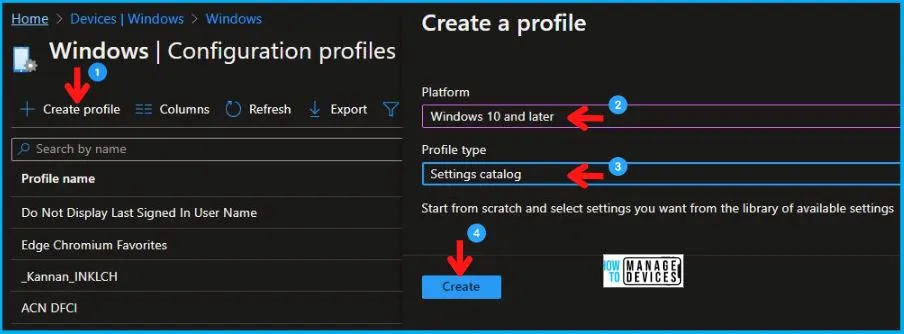
On the Basics tab pane, I provide a name for the policy as “Turn off App Notifications On The Lock Screen Policy.” Optionally, if you want, you can enter a policy description and proceed by selecting “Next“.
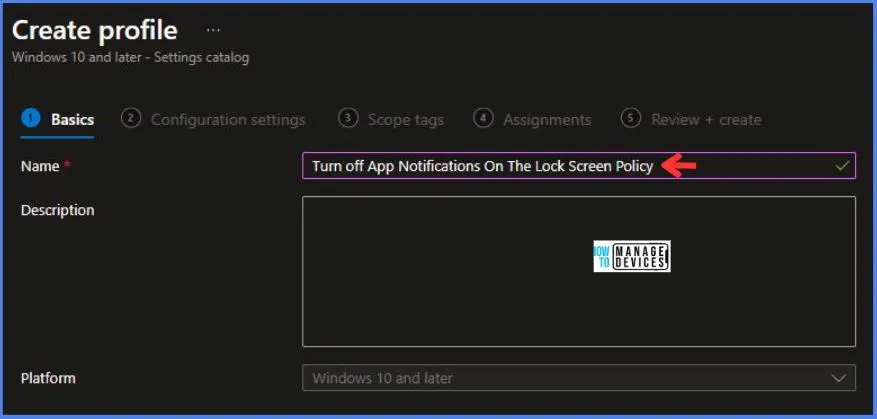
Now in Configuration Settings, click Add Settings to browse or search the catalog for the settings I want to configure.
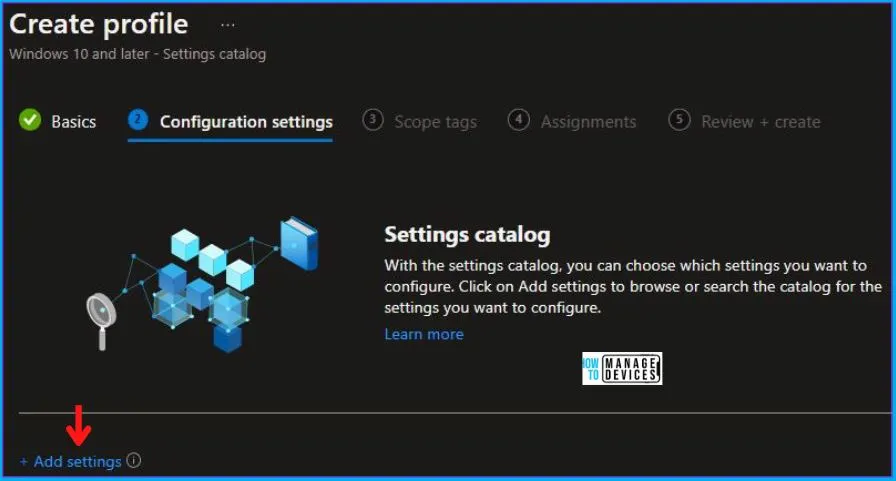
In the Settings Picker windows, I searched for the keyword Lock Screen, I found the category Administrative Templates\System\Logon and selected this.
When I select that option as stated above, I see the sub-category Turn off app notifications on the lock screen. After selecting that, click the cross mark at the right-hand corner, as shown below.
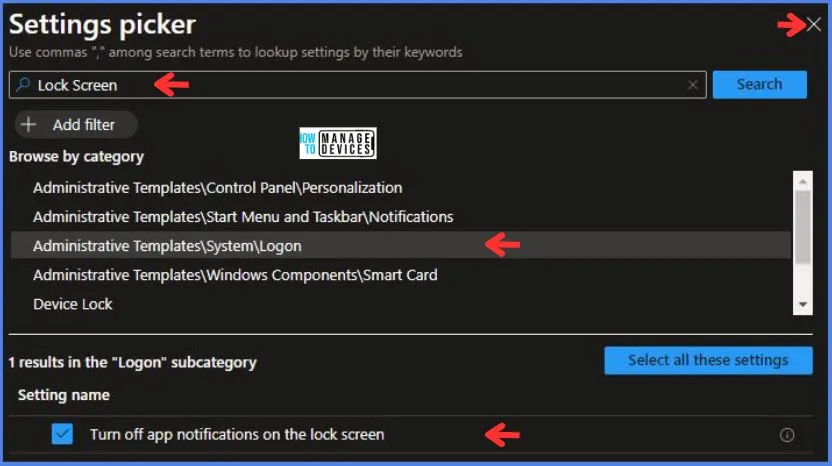
I kept the Turn off app notifications on the lock screen as Enabled and Click on Next to continue.
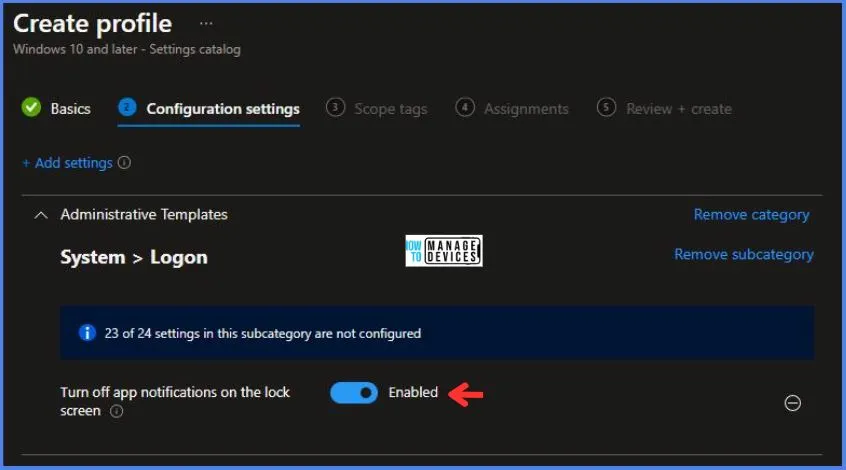
Using Scope tags, you can assign a tag to filter the profile to specific IT groups. One can add scope tags (if required) and click Next to continue. Now in Assignments, in Included Groups, you need to click on Add Groups, choose Select Groups to include one or more groups, and click Next to continue.
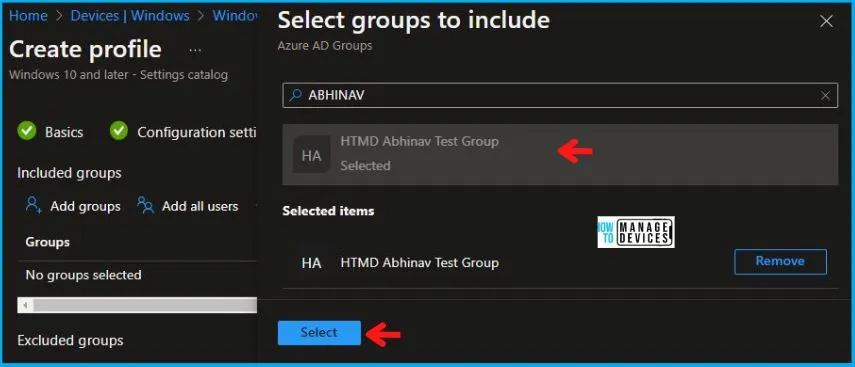
In the Review + Create tab, I review settings. After clicking on Create, changes are saved, and the profile is assigned.
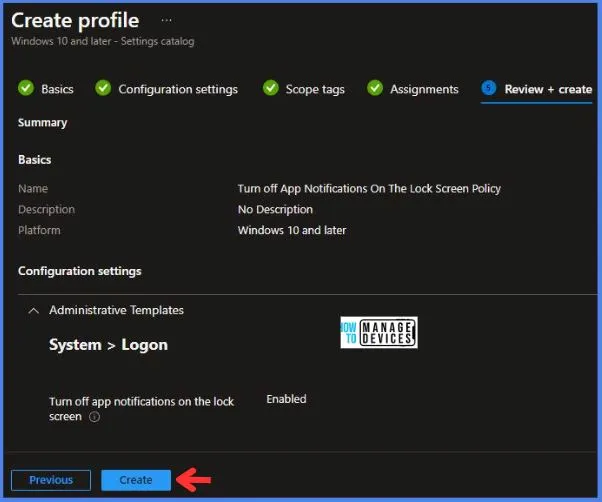
Upon successfully creating the “Turn off App Notifications On The Lock Screen Policy,“ notification will appear in the top right-hand corner, confirming the action. You can also verify the policy’s existence by navigating to the Configuration Profiles list, where it will be prominently displayed.
Your groups will receive your profile settings when the devices check in with the Intune service. The Policy applies to the device.
Intune Report for Turn off App Notifications On The Lock Screen Policy
From the Intune Portal, you can view the Intune settings catalog profile report, which provides an overview of device configuration policies and deployment status.
To track the assignment of the policy, you need to select the relevant policy from the Configuration Profiles list. Then, you can review the device and user check-in status to determine whether the policy has been successfully applied. If you require more detailed information, you can click on “View Report” to access additional insights.
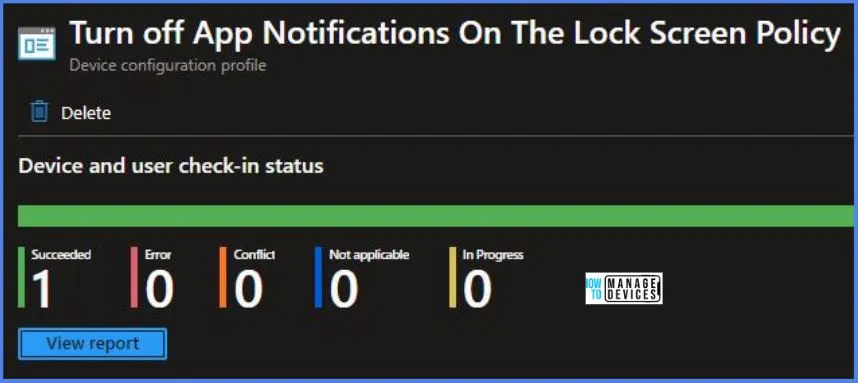
Intune MDM Event Log
To verify the successful implementation of String or integer policies on Windows 10 or 11 devices through Intune, you can leverage event IDs 813 and 814. These event IDs provide valuable insights into the application status of the policy as well as the specific value assigned to the policy on those devices. In the case of this particular policy, the value is a String and is linked to the event ID 814.
By analyzing these event IDs, you can gain a clear understanding of the policy’s application status and the corresponding value associated with it on the devices in question.
To confirm this, you can check the Event log path – Applications and Services Logs – Microsoft – Windows – Devicemanagement-Enterprise-Diagnostics-Provider – Admin.
MDM PolicyManager: Set policy string, Policy: (
